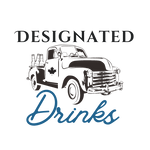When you pick up a bottle of non-alcoholic beer labeled “0.0% ABV,” you might take it at face value: no alcohol, none whatsoever. But is it truly free of ethanol, or is this claim more of a marketing ideal than a scientific fact? Let’s break down what “0.0%” really means, what “zero” truly represents, and why the concept of absolute zero alcohol might be up for debate.
What Does 0.0% ABV Actually Mean?
In many countries, beverages with less than 0.5% alcohol by volume (ABV) can legally be labeled as “non-alcoholic.” Some breweries go further, claiming “0.0% ABV” by employing advanced techniques to remove alcohol entirely or to stop fermentation before significant ethanol is produced.
However, here’s the catch: even with modern brewing techniques, the complete absence of alcohol—down to the last molecule—is difficult to guarantee. At the molecular level, “zero” is a concept more rooted in mathematics than in physical reality. Here are two reasons why absolute zero is debatable:
-
Detection Limits: Even the most sophisticated tools can only detect alcohol to a certain threshold, often parts per million or billion. If there’s any ethanol below this detection limit, it’s effectively invisible but still present.
-
Theoretical Zero: In practical terms, “zero” means undetectable rather than nonexistent. However, on a molecular level, achieving a state where not a single ethanol molecule remains in a beverage is virtually impossible to verify. Science has limits, and the tools used to measure alcohol content reflect these constraints.
What Is “Zero” Anyway?
The concept of zero has always been somewhat abstract. In mathematics, zero is an absolute—the total absence of quantity. In the physical world, however, zero becomes harder to define. Consider the air around you: it likely contains trace amounts of substances like ethanol, even if they’re present in concentrations so small they have no measurable impact. Similarly, in a “0.0% ABV” beer, ethanol may exist at an atomic scale but remain undetectable and functionally irrelevant.
From a scientific perspective, “zero ethanol” in a non-alcoholic beer is more about practicality than perfection. The production and testing methods aim to remove ethanol to a point where its presence has no effect—physiologically, chemically, or legally.
How Non-Alcoholic Beer Is Made
Non-alcoholic beer begins like any other beer, with fermentation—a process where yeast converts sugars into ethanol and carbon dioxide. To make “0.0%” beer, breweries use techniques like vacuum distillation or reverse osmosis to remove alcohol after fermentation. Alternatively, they may halt fermentation early to minimize alcohol production.
While these methods are highly effective, they’re not perfect. Trace amounts of alcohol may remain, even if they’re below the threshold of detection. This isn’t a failure of the brewery; it’s simply a limitation of science and the natural world.
How Much Alcohol Is 0.5% ABV?
For beverages labeled as non-alcoholic but containing up to 0.5% ABV, it’s helpful to understand just how little alcohol this actually represents:
-
Volume-to-Alcohol Ratio: A standard 12-ounce (355 mL) serving of a 0.5% ABV beer contains about 1.8 milliliters of ethanol. By comparison, a regular beer at 5% ABV contains approximately 17.8 milliliters of ethanol per 12-ounce serving. That’s nearly 10 times more alcohol in a standard beer than in a non-alcoholic one.
-
Daily Intakes: To consume the same amount of alcohol as one regular beer, you would need to drink over 10 bottles of 0.5% ABV non-alcoholic beer—a highly impractical scenario for most people.
-
Ethanol in Everyday Foods: Ripe bananas, for example, contain around 0.2% ABV or more. Eating a few bananas could provide as much ethanol as a single non-alcoholic beer.
-
Metabolic Perspective: The human body metabolizes trace amounts of ethanol rapidly. Even if you consumed several 0.5% ABV beers, the physiological effect would be negligible.
Why Absolute Zero Might Be Impossible
Measuring alcohol content to the degree of “0.0000000000001%” is theoretically possible but impractical and unnecessary. Here’s why:
-
Instrument Sensitivity: Precise instruments are expensive and can only measure down to certain limits. Beyond parts per billion, it becomes irrelevant for most applications.
-
Natural Variability: Even if alcohol is removed entirely during production, trace amounts of ethanol could be introduced through environmental exposure or natural chemical reactions.
-
Philosophical Zero: Absolute zero alcohol would require eliminating every single molecule of ethanol. However, in practical terms, the difference between “0.0%” and an infinitesimally small amount of alcohol is meaningless. It’s akin to asking whether a single molecule of ethanol in a swimming pool makes it “alcoholic.”
Does It Even Matter?
For most people, the goal of drinking non-alcoholic beer is to avoid the effects of alcohol, not necessarily to eliminate ethanol down to the last molecule. Even if a non-alcoholic beer contains 0.0000000001% alcohol, the amount is so minuscule that it’s functionally nonexistent. To put it into perspective:
-
A ripe banana contains about 0.5 grams of ethanol per kilogram—far more than any trace ethanol in “0.0%” beer.
-
The ethanol naturally present in your body due to digestion and metabolism exceeds what’s found in non-alcoholic beer.
Conclusion: A Practical Approach to Non-Alcoholic Beer
While breweries can confidently label their products as “0.0% ABV” based on modern testing, the reality is that absolute zero alcohol is nearly impossible to verify. On a molecular level, “zero” remains a philosophical concept rather than a physical reality. However, for practical purposes, “0.0%” beers are as close to alcohol-free as anyone could reasonably expect.
Even beers containing up to 0.5% ABV are so low in alcohol content that their impact is negligible. These beverages offer an excellent alternative for those seeking the taste and experience of beer without the intoxicating effects. So, the next time you enjoy a non-alcoholic beer, rest assured that it’s as close to zero as it gets. Absolute purity may remain an ideal, but in the real world, practicality wins every time.

